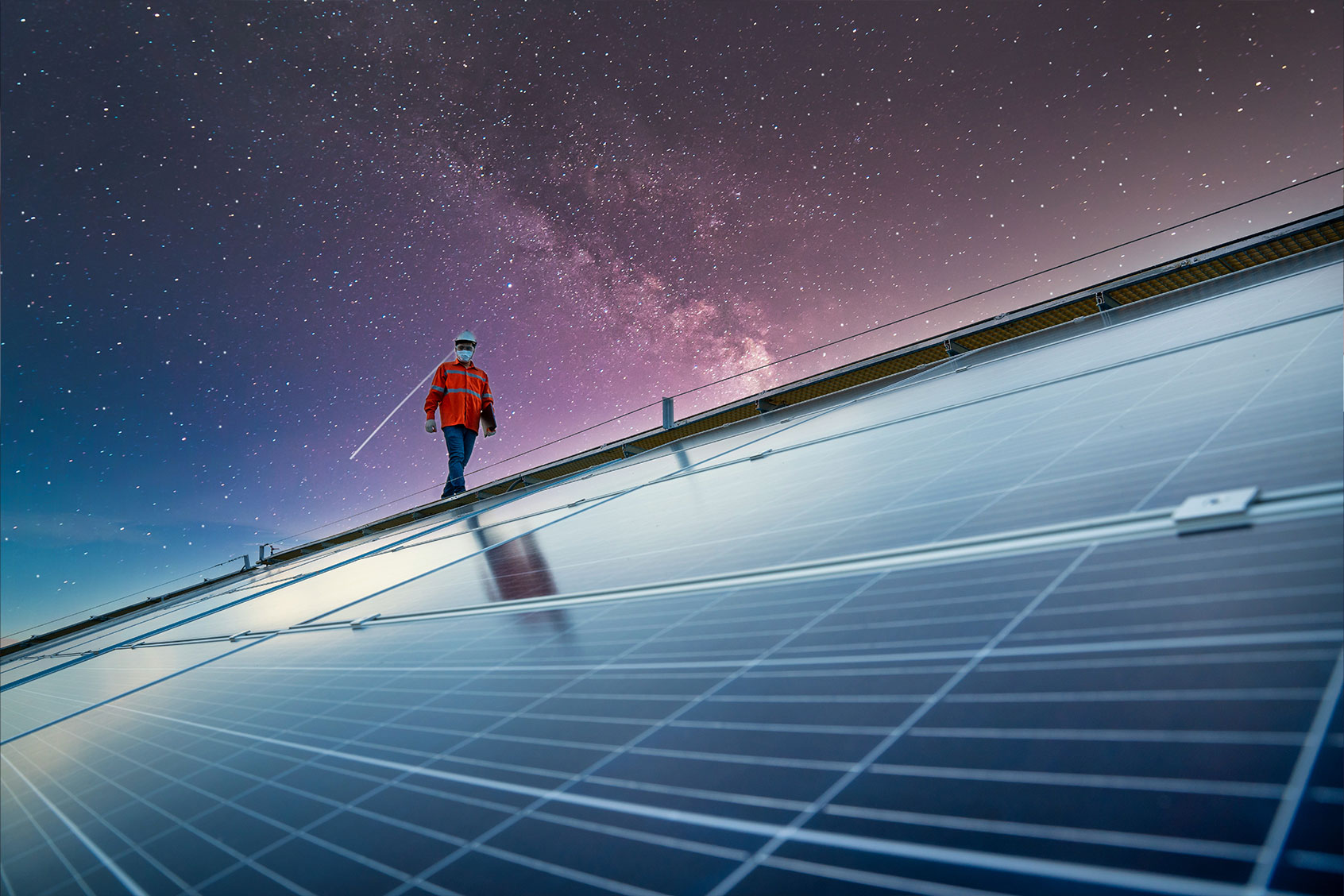It sounds like a long shot to some: The idea of solar power plants orbiting the Earth and beaming renewable energy back to us. But new research from the U.K., along with the development of ultra-lightweight solar cells made of cadmium telluride, is generating new hope that solar panel farms in space could be closer to becoming a reality than ever before.
Between the increasing power needs of spacecraft payloads and the Earth's own accelerated need for zero-carbon electricity, calls have grown louder for new ways to capture and use solar power both in space and on Earth. Two major obstacles have stood in the way of scientists' efforts to get that near-boundless solar energy from a fleet of light-collecting panels in orbit down to the power lines on the planet: a too-high cost of creating solar panel farms in the first place, and the cost of maintaining them against punishing levels of radioactivity.
New findings from the Universities of Surrey and Swansea, however, show that the production of a new, lightweight solar panel is possible — and that it could withstand solar radiation for more than six years, generating power even after 30,000 orbits of the planet. Craig Underwood, emeritus professor of spacecraft engineering at the University of Surrey Space Centre, is the study's lead author.
“We are very pleased that a mission designed to last one year is still working after six. These detailed data show the panels have resisted radiation and their thin-film structure has not deteriorated in the harsh thermal and vacuum conditions of space," Underwood said in a release from the university.
The new research appeared in the journal Acta Astronautica on Oct. 24. Unlike previous panels, the new panels have photovoltaic cells made of cadmium telluride. Researchers say the new cells mean that the panels are much more lightweight, a quality that can quickly determine whether or not the new solar panels are worth the at-scale production.
"This ultra-low mass solar cell technology could lead to large, low-cost solar power stations deployed in space, bringing clean energy back to Earth."
Planetary physicist Phil Metzger, of the University of Central Florida, has been studying the frontier of spaceflight tech for decades — including a 30-year stint at NASA where he co-founded the Swamp Works research lab. Metzger's focus is now on developing "economic planetary science."
"It is not just the low mass of this technology that is important, but also the fact that it is flexible enough to be launched on rollers then deployed to a very large size using a simple mechanical process. This will reduce the mass of the deployment system and make it more reliable, greatly reducing the cost," Metzger, who was not involved in the research, told Salon.
Not only are the panels larger, more lightweight and cheaper to produce — Underwood said they also provide more power output per cell than current cell tech.
"This ultra-low mass solar cell technology could lead to large, low-cost solar power stations deployed in space, bringing clean energy back to Earth – and now we have the first evidence that the technology works reliably in orbit," he said.
The new tech — and the study results — aren't without issue, though. Although the new solar cells outperformed current tech, they still lost their efficiency over time.
The University of Swansea's Dr. Dan Lamb is still encouraged by the results, however. He sees in-roads into future iterations of the tech, and a path toward viability opening up.
"The successful flight test of this novel thin film solar cell payload has leveraged funding opportunities to further develop this technology. Large area solar arrays for space applications are a rapidly expanding market and demonstrations such as this help to build on the U.K.’s world class reputations for space technology," Lamb said.
Want more health and science stories in your inbox? Subscribe to Salon's weekly newsletter Lab Notes.
And those funding opportunities could grow as the tech's cross-market usefulness grows from the rarified tech needs of commercial spaceflight payloads to the broader needs of countries of all sizes.
"I think it is inevitable that large solar farms in space will one day be economically viable as the technology continues to improve."
"There are advocates who point out that niche markets already exist for space solar power, like providing energy to smaller island nations or to large-scale operations like military campaigns that need on-demand power," said Metzger. "After the niche markets are served, the experience curve and economies of scale will begin reducing the cost of space solar power so it becomes viable in even more markets. Technology advancements like this one are crucial to getting the virtuous cycle started."
We need your help to stay independent
Metzger sees advances like those from Surrey and Swansea as part of a larger, unstoppable march toward a future where renewable power from space is an economically normalized part of our collective energy tech.
"I think it is inevitable that large solar farms in space will one day be economically viable as the technology continues to improve," he said. "Solar power from space can be collected at the ground using a thin wire mesh that can be deployed over cropland or forests or the ocean without blocking the sunlight, so it doesn’t harm ecosystems that depend on the land. This dual-land use will become increasingly important as we move toward more renewable energy."
Read more
about renewable energy development


